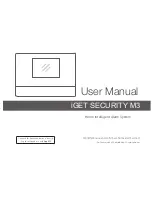
SAFETY EQUIPMENT
A comprehensive range of CLARKE safety equipment for use when
welding is available from your local dealer.
NO-GAS MIG WELDING - PRINCIPLES OF OPERATION
MIG (Metal Inert Gas) welding is a process in which a power wire electrode
is fed continuously into the weld pool at a controlled, constant rate.
The wire is connected to the positive side of a rectified voltage supply. The
workpiece is connected to the
negative
side of the supply (NO-GAS Welding).
When the wire is fed, it comes into contact with the workpiece and an arc
is struck. The arc melts the wire and the material, fusing it together.
The wire, which is fed by the wire feed motor is fed into the weld pool,
burning itself off at a rate dependent upon the selected wire feed speed.
To protect the weld pool from oxidation and impurities during the welding
process, a shielding gas flows over and around the weld pool. This gas flow
is provided by a flux core within the welding wire electrode. The flux melts
due to the heat produced, giving off a gas. This gas prevents oxygen, in
the surrounding air, from coming into contact with the molten pool at a
critical time. Solidification takes place, creating a much stronger, cleaner
weld, free of impurities.
This range of welders may be converted to use gas bottles, essential when
welding aluminium, stainless steel etc. Please refer to the note on page 19.
BENEFITS OF MIG WELDING
•
Better outdoor use as wind has less chance of disturbing the gas shroud.
•
50% faster welding time.
•
There is no slag removal, thus eliminating almost all post-welding
cleaning operations.
•
Overall, a faster more efficient way of getting the job done.
•
Less heat - less distortion.
•
Ability to weld thin material.
NO-GAS welding additionally allows for :
•
Operator training time kept to a minimum
•
No need for short life gas bottles
•
Outdoor use is easier as wind or breeze has less chance of blowing
away the gas cloud.
12
Summary of Contents for weld MIG 100EN
Page 29: ...WIRING DIAGRAMS MIG 90EN 29...
Page 30: ...WIRING DIAGRAMS MIG 100EN 105EN 30...
Page 31: ...WIRING DIAGRAMS MIG 151EN 31...
Page 32: ...PARTS DIAGRAM MIG 90EN 32...
Page 34: ...PARTS DIAGRAM MIG 100EN 105EN 34...
Page 36: ...PARTS DIAGRAM MIG 151TE 36...
Page 40: ......













































